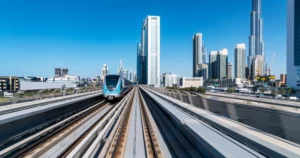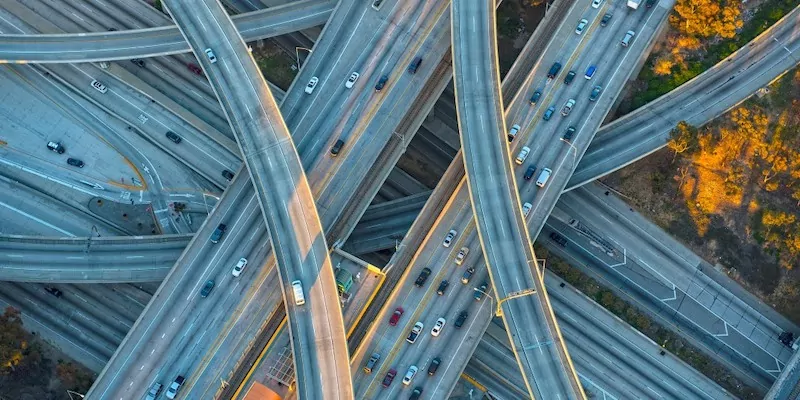
Transportation infrastructure—a broad term that encompasses the networks of fixed installations that ensure safe transport of people and goods—is a critical part of thriving, modern economies. Examples of transportation systems include roadways, public transit systems, airports, train stations, bus stations, ferry terminals, pipelines and warehouses. People and businesses rely on transportation networks every day, but what happens when critical assets break unexpectedly, or worse, when they pollute our environment so much that they threaten our natural resources?
In the last few years, disruptions from the COVID-19 pandemic and conditions brought about by climate change have hampered economic development and spurred unprecedented transportation infrastructure investment. The following are just a few of the economic growth initiatives being launched to build and rebuild vital assets in the United States, Europe and Asia:
- In the United States, the federal government passed a bipartisan infrastructure law aimed at building and rebuilding critical infrastructure including the country’s most vital transportation networks. This ambitious bill, largely managed by the US Department of Transportation, will distribute USD 1 trillion to fund construction, manufacturing initiatives and public works.
- In Europe, 107 transport infrastructure projects were selected by the European Union (EU) to receive over six billion euros in grant programs in the coming years to help improve connectivity, public transportation and alternate modes of transportation in both urban and rural areas.
- In the Asia Pacific region, the Asian Development Bank announced that USD 1.7 trillion per year in infrastructure development would be needed over the next seven years to meet its goals.
But it won’t be enough to simply repair and rebuild existing infrastructure using the same methods and technologies they were built with in the first place. If these transportation projects are to be truly transformative in ways that will help the world bounce back from the next pandemic and reduce our reliance on fossil fuels, they will have to be built more sustainably.
The importance of building more sustainable transportation infrastructure
The transportation sector’s carbon footprint and subsequent contribution to climate change are undeniable. According to the International Energy Agency, the transportation industry accounts for 21%, or nearly one-fourth, of greenhouse gas emissions worldwide. The International Institute of Sustainable Development (IISD) attributes 64% of global oil consumption and 27% of all energy use to transport services—as well as 23% of the world’s total energy-related C02 emissions.
Climate change mitigation will require significant investments in sustainable transportation infrastructure, not just in Europe, the U.S. and China, but also in developing countries where outdated equipment must be replaced or brought up to modern standards to meet the goals set out by the 2015 Paris Climate accords. But sustainable transportation infrastructure isn’t just about improving our environment, it’s also good business. Here are some of the most common business benefits sustainable transportation infrastructure yields to enterprises that make the investment.
Better compliance with environmental health and safety (EHS) regulations
As the impacts of climate change are felt in more and more places around the globe, organizations are facing tighter environmental health and safety (EHS) regulations. By integrating EHS monitoring into their asset maintenance programs, they can self-police, monitoring their emissions and ensuring they stay in compliance.
Lower fuel costs
Modern enterprises committed to sustainable transportation infrastructure use solutions like asset performance monitoring (APM) and enterprise asset management (EAM), to ensure their assets run efficiently. EAM and APM, equipped with capabilities like remote monitoring, help organizations constantly measure the fuel their assets are using and ensure they’re performing at optimal levels in ways that minimize their environmental impact.
More reliable and efficient maintenance procedures
By switching from outdated, inefficient reactive or run-to-failure maintenance programs to fully integrated asset reliability and maintenance programs like preventive or predictive maintenance, organizations can more effectively monitor, manage and maintain their assets in ways that facilitate sustainability across the entire asset lifecycle.
Increased asset availability, better asset performance and longer asset lifespans
Sustainable transportation infrastructure deploys modern preventive or predictive maintenance programs that allow for smarter asset management, spotting and treating problems before they result in costly asset downtime. Both strategies help enterprises better plan for maintenance and avoid costly shutdowns that can impact the entire business.
Best practices for building more sustainable transportation infrastructure
By leveraging new technologies and industry-wide best practices, organizations are finding ways to build stronger, more resilient transportation infrastructure. Here are five best practices that are helping them succeed.
Prioritize what’s best for your organization
When planning a sustainable transportation initiative, it’s important to prioritize what your organization needs along with what’s possible for it to achieve with the resources it has. For example, while switching an entire fleet of delivery vehicles from fossil fuels to electric might be a good long-term goal, it may require more of an investment than you can make right now. Converting a percentage of your fleet to electric power is a more realistic first step. That way, the organization has a chance to resolve any issues that arise before converting the entire fleet.
Manage your assets with modern, sustainable solutions
Today, in the transportation industry, organizations are relying more and more on EAM and APM approaches to help them achieve their sustainable transportation infrastructure goals. EAM and APM solutions help improve work management processes, maintenance programs, planning and scheduling, supply chain management and EHS conditions.
Upgrade maintenance programs to a preventive or predictive approach
Like asset management, asset maintenance is also a critical area to address when it comes to building sustainability into your transportation infrastructure initiatives. Preventive maintenance is an approach that prescribes regular maintenance activities to prevent unexpected equipment failures that can result in costly and unsustainable breakdowns. Predictive maintenance takes these activities one step further by using historical and failure data about the asset to predict when it might have a problem. Both approaches help create more sustainable infrastructure than their predecessor—run-to-failure maintenance—because they proactively anticipate and help resolve maintenance issues before they cause equipment failure.
Enhance asset monitoring with Internet of Things (IoT) and artificial intelligence (AI) capabilities
With everything from valves and vehicles connected by sensors and systems via the Internet of Things (IoT), organizations can incorporate advanced analytics and artificial intelligence (AI) into their EAM and APM strategies. Instruments on complex assets like fuel tanks, speedometers and engines gather data and analyze it using AI. This helps ensure that assets are performing optimally and with minimal environmental impact.
Leverage digital-twin technologies to help with planning
A digital twin is a virtual representation of an asset that allows stakeholders to perform tests using simulations that show how the asset will fare under a set of conditions or in the environment where it will operate. Engineers working on transportation infrastructure projects use digital twins frequently to evaluate how a variety of assets like buildings, bridges, jet turbines, automobiles and aircraft will react when subjected to certain conditions, such as a storm, flooding or high temperatures.
Sustainable infrastructure use cases
Transportation infrastructure supports a wide variety of industries and needs. From the passenger bus and train terminals commuters stand in every morning, to airports, freight terminals and busy shipping networks that power global trade—it’s hard to imagine the world we live in without it. Sustainable transportation infrastructure helps structures and networks function at optimal levels so everyone and everything gets to where they are going with minimal impact on the environment.
Here are two examples of sustainable transportation infrastructure in two industries.
Aviation
Airports are busy hives of activity with millions of people depending on them every day for fast, safe transport. Airport maintenance systems ensure critical assets like security equipment, walkways, elevators, air conditioning, water and sewer are all functioning properly. But many airports were constructed decades ago, and their maintenance teams still rely on outdated, inefficient technologies and workflows to keep them running. To make airports more modern, resilient and sustainable, stakeholders are adding new technologies and capabilities.
AI and IoT tools enable maintenance managers to monitor the health and performance of their assets in real-time. They also help ensure compliance with stringent security requirements that keep travelers safe and improve inefficient maintenance processes. By replacing email and other legacy forms of communication with fast, easy mobile applications, workers can better communicate with each other in the field, prioritize work orders and manage resources in a complex, demanding environment.
Freight transport
According to the Massachusetts Institute of Technology, the transportation and storage of freight make up 20% of global greenhouse gas emissions. To lower that number, stakeholders are looking for ways to build more sustainability into the industry’s infrastructure.
First, they need to optimize the fuel efficiency and maintenance programs for the vehicles used in the transport of goods. Each asset a freight company owns has a specific lifecycle that includes its installation, maintenance and replacement. These activities contribute to the asset’s carbon footprint, so the more they can be reduced, the lower the asset’s overall carbon footprint will be. For example, if a delivery truck or ship transporting goods breaks down midway through its journey, the technicians sent to repair it will use fuel to get there and back—increasing the ship’s carbon footprint.
By deploying EAM and APM strategies to lengthen asset lifecycles and performing preventive and predictive maintenance, freight transporters are making their business more sustainable and fuel-efficient, ensuring they’re in compliance with the EHS regulations of the countries in which they operate.
Sustainable transportation infrastructure solutions
Organizations looking to improve their transportation infrastructure asset management practice have many solutions to choose from. When identifying the right one for their needs, they should prioritize platforms that combine a robust set of technological offerings with historical best practices.
IBM Maximo Application Suite is an integrated asset and reliability management solution that specifically helps organizations monitor, manage and maintain their transportation infrastructure assets, including optimizing their productivity and deploying preventive and predictive maintenance capabilities.
Learn more about IBM Maximo Application Suite
More from IBM Maximo
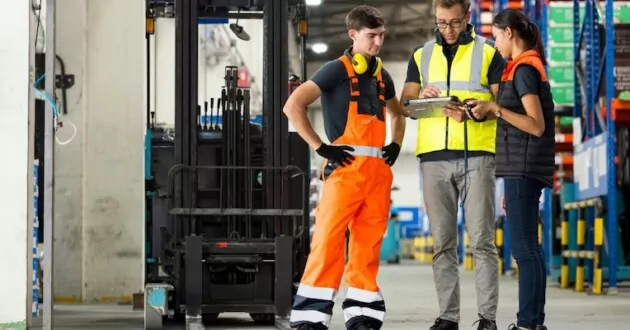
How to choose the best enterprise asset management software
4 min read – Large organizations are comprised of many assets that require continuous monitoring to ensure optimal productivity. One business’ assets might be thousands of miles of electrical wiring, while another’s might be manufacturing equipment or warehouses. Whatever the case, large organizations can benefit from enterprise asset management (EAM) software to manage all the physical stuff the company owns. While there are a lot of EAM products on the market, this article will help you ask the right questions to find the right…
4 min read

CMMSs help medical facilities thrive in the face of labor shortages
5 min read – The demand for skilled healthcare professionals is increasing. However, the number of biomedical equipment technicians (BMETs)—the professionals who manage, repair and maintain the medical equipment—is shrinking. According to a 2020 survey, 40% of the BMET workforce is age 55 and older, with nearly 1 in 4 BMETs over the age of 60 and approaching retirement. What’s more, dozens of BMET education/certification programs have shuttered in recent years, leaving nearly 20 states with no accredited BMET programs to funnel new graduates…
5 min read
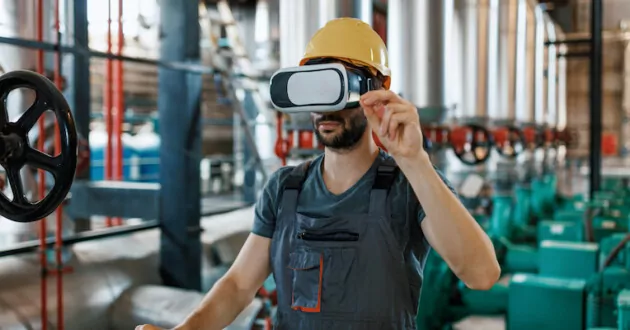
Six EAM trends pushing the oil and gas industries forward
5 min read – The oil and gas industry remains an integral part of the energy landscape, but it faces a number of modern challenges, including volatile market conditions, expanding environmental regulations and the growing need for operational efficiency. To navigate these challenges, industry players are turning to enterprise asset management (EAM) solutions. EAM is an invaluable tool that allows oil and gas companies to manage physical assets and infrastructure throughout their lifecycles—from design and procurement to maintenance and disposal. As of 2022, the…
5 min read
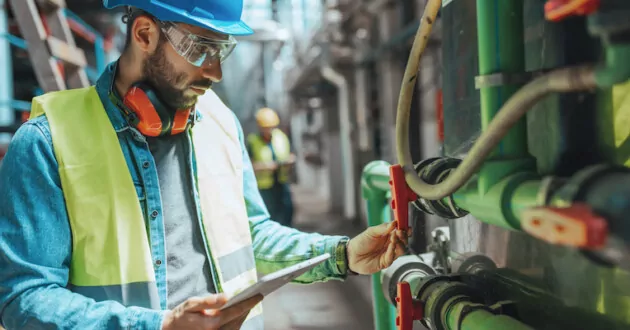
10 ways the oil and gas industry can leverage digital twin technology
5 min read – The oil and gas industries have been the backbone of the global economy for decades. However, market volatility, environmental concerns and operational inefficiencies have also challenged these industries to adapt and innovate. The use of digital twins is one such innovation. In the era of digital transformation, digital twins are emerging as a potent solution to energy production challenges. Digital twin technology, an advancement stemming from the Industrial Internet of Things (IIoT), is reshaping the oil and gas landscape by…
5 min read
- SEO Powered Content & PR Distribution. Get Amplified Today.
- PlatoData.Network Vertical Generative Ai. Empower Yourself. Access Here.
- PlatoAiStream. Web3 Intelligence. Knowledge Amplified. Access Here.
- PlatoESG. Automotive / EVs, Carbon, CleanTech, Energy, Environment, Solar, Waste Management. Access Here.
- BlockOffsets. Modernizing Environmental Offset Ownership. Access Here.
- Source: https://www.ibm.com/blog/transportation-infrastructure/
- :has
- :is
- :not
- :where
- $UP
- 1
- 10
- 107
- 11
- 20
- 2015
- 2020
- 2022
- 2023
- 26
- 27
- 30
- 300
- 40
- 60
- 7
- 8
- 9
- a
- About
- According
- Accounts
- accredited
- Achieve
- across
- activities
- activity
- adapt
- adding
- address
- advanced
- advancement
- Advertising
- age
- ago
- AI
- aimed
- AIR
- Air Conditioning
- aircraft
- airport
- Airports
- All
- allow
- allows
- along
- also
- ambitious
- amp
- an
- analytics
- analyze
- and
- and infrastructure
- announced
- anticipate
- any
- Application
- applications
- approach
- approaches
- approaching
- ARE
- AREA
- areas
- arise
- around
- article
- artificial
- artificial intelligence
- Artificial intelligence (AI)
- AS
- asia
- asian
- Asian Development Bank
- asset
- asset management
- Assets
- At
- attributes
- AUGUST
- author
- automobiles
- availability
- avoid
- back
- Backbone
- Bank
- BE
- been
- before
- being
- benefit
- benefits
- BEST
- best practices
- Better
- Bill
- Billion
- biomedical
- bipartisan
- Blog
- blogs
- both
- Bounce
- Break
- breaks
- bridges
- broad
- brought
- build
- Building
- built
- bus
- business
- Business Benefits
- businesses
- busy
- but
- by
- CAN
- capabilities
- carbon
- carbon footprint
- card
- Cards
- case
- CAT
- Cause
- certain
- chain
- challenged
- challenges
- Chance
- change
- check
- checking
- China
- Choose
- CIS
- class
- Climate
- Climate change
- color
- combine
- comes
- coming
- committed
- Common
- communicate
- Communication
- commuters
- Companies
- company
- complex
- compliance
- Comprised
- Concerns
- conditions
- connected
- Connectivity
- constantly
- construction
- consumption
- Container
- continue
- continuous
- contribute
- contribution
- converting
- costly
- countries
- country’s
- COVID-19
- COVID-19 pandemic
- create
- critical
- Critical Infrastructure
- CSS
- custom
- data
- Date
- day
- decades
- Default
- definitions
- delivery
- Demand
- demanding
- Department
- department of transportation
- Depending
- deploying
- deploys
- description
- Design
- developing
- Developing Countries
- Development
- Development Bank
- digital
- Digital Transformation
- digital twin
- Digital twins
- disruptions
- distribute
- down
- downtime
- dozens
- each
- easy
- Economic
- Economic Development
- Economic growth
- economies
- economy
- effectively
- efficiency
- efficient
- efficiently
- Electric
- emerging
- Emissions
- enable
- encompasses
- energy
- energy use
- engineer
- Engineers
- Engines
- enough
- ensure
- ensuring
- Enter
- Enterprise
- enterprises
- Entire
- Environment
- environmental
- environmental concerns
- equipment
- equipped
- Era
- Ether (ETH)
- EU
- Europa
- Europe
- European
- european union
- European Union (EU)
- Euros
- evaluate
- Every
- every day
- everyone
- everything
- Examining
- example
- examples
- existing
- Exit
- expanding
- Face
- faces
- facilitate
- facilities
- facing
- Failure
- FAST
- Federal
- Federal government
- few
- field
- Find
- finding
- First
- five
- fixed
- FLEET
- follow
- following
- fonts
- Footprint
- For
- forms
- Forward
- fossil
- fossil fuels
- freight
- frequently
- from
- Fuel
- fuel efficiency
- fuels
- fully
- function
- functioning
- fund
- further
- GAS
- gather
- generator
- get
- glasses
- Global
- Global economy
- globe
- goal
- Goals
- going
- good
- goods
- Government
- grant
- greenhouse gas
- Greenhouse gas emissions
- Grid
- Growing
- Growth
- happens
- Hard
- Have
- Health
- healthcare
- height
- help
- helping
- helps
- here
- High
- highways
- his
- historical
- How
- How To
- However
- HTTPS
- IBM
- ICO
- ICON
- identifying
- IEA
- if
- image
- imagine
- Impact
- Impacts
- importance
- important
- improve
- improving
- in
- include
- includes
- Including
- incorporate
- increasing
- index
- industrial
- industries
- industry
- industry’s
- inefficient
- Infrastructure
- Initiative
- initiatives
- innovate
- Innovation
- installation
- Institute
- instruments
- integral
- integrated
- Integrating
- Intelligence
- Internet
- internet of things
- into
- invaluable
- investment
- Investments
- iot
- issues
- IT
- ITS
- journey
- jpg
- July
- just
- Keep
- labor
- landscape
- large
- largely
- Last
- launched
- Law
- leaving
- Legacy
- levels
- Leverage
- leveraging
- lifecycle
- lifecycles
- like
- live
- long-term
- longer
- looking
- Lot
- lower
- machine
- maintain
- maintenance
- make
- Making
- manage
- managed
- management
- Management Solution
- Managers
- manufacturing
- many
- Market
- market conditions
- market volatility
- max-width
- May..
- measure
- medical
- Meet
- mesh
- methods
- MidWay
- might
- millions
- min
- minimal
- minutes
- mitigation
- Mobile
- Mobile Applications
- Modern
- modes
- Monitor
- monitoring
- more
- morning
- most
- MRI
- much
- must
- Natural
- Navigate
- Navigation
- nearly
- Need
- needed
- needs
- networks
- New
- New technologies
- next
- no
- nothing
- now
- number
- of
- Offerings
- Oil
- Oil and Gas
- older
- on
- ONE
- operate
- operational
- optimal
- Optimize
- optimized
- optimizing
- or
- orders
- organization
- organizations
- Other
- our
- out
- over
- overall
- owns
- page
- pandemic
- paris
- part
- passed
- patient
- People
- per
- percentage
- perform
- performance
- performing
- PHP
- physical
- pipe
- Place
- Places
- plan
- planning
- Platforms
- plato
- Plato Data Intelligence
- PlatoData
- players
- plugin
- policy
- position
- possible
- Post
- power
- practice
- practices
- predict
- prevent
- Prioritize
- Problem
- problems
- processes
- procurement
- Production
- productivity
- Products
- professionals
- Programs
- projects
- properly
- public
- public transit
- public transportation
- Pushing
- Questions
- React
- Reading
- real-time
- realistic
- Reality
- rebuilding
- receive
- recent
- reduce
- Reduced
- region
- regular
- regulations
- reliability
- reliable
- reliance
- rely
- relying
- remains
- remote
- repair
- replaced
- replacement
- representation
- require
- Requirements
- resilient
- Resources
- responsive
- result
- retirement
- right
- robots
- robust
- Run
- running
- Rural
- Rural Areas
- s
- safe
- Safety
- same
- scheduling
- Screen
- scripts
- security
- selected
- sensors
- sent
- seo
- set
- seven
- Shipping
- shortages
- should
- show
- shutdowns
- significant
- simply
- site
- SIX
- skilled
- small
- smarter
- So
- Software
- solution
- Solutions
- some
- specific
- specifically
- Sponsored
- spotting
- stakeholders
- stand
- standards
- start
- States
- Stations
- stats
- stay
- Step
- Still
- storage
- Storm
- strategies
- stronger
- subsequent
- succeed
- such
- suite
- supply
- supply chain
- supply chain management
- Supports
- Survey
- Sustainability
- sustainable
- sustainably
- system
- Systems
- Tablet
- takes
- Tanks
- teams
- technological
- Technologies
- Technology
- term
- tests
- than
- that
- The
- the world
- their
- Them
- theme
- There.
- These
- they
- things
- this
- thousands
- threaten
- Thrive
- thriving
- Through
- throughout
- tighter
- time
- Title
- to
- tool
- tools
- top
- Total
- Train
- Transformation
- transformative
- transit
- transport
- transportation
- transporting
- travelers
- treating
- Trends
- Trillion
- truck
- truly
- Turning
- twin
- Twins
- two
- type
- u.s.
- under
- Unexpected
- union
- United
- United States
- unprecedented
- unsustainable
- urban
- URL
- us
- USD
- use
- used
- using
- valves
- variety
- Vehicles
- via
- Virtual
- Virtual reality
- vital
- volatile
- Volatility
- W
- Warehouse
- Water
- Way..
- ways
- we
- WELL
- were
- What
- whatever
- when
- which
- while
- WHO
- wide
- will
- with
- without
- WordPress
- Work
- work management
- workers
- workflows
- Workforce
- working
- works
- world
- world’s
- worldwide
- worse
- would
- written
- XML
- year
- years
- yields
- you
- young
- Your
- zephyrnet









